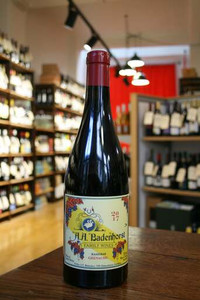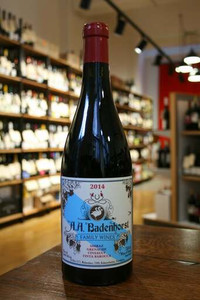
This dry Muscat expression shows an alluring dark golden honey yellow colour with aromatics that are equally seductive. Spending 10 days on its skins during fermentation, there are wonderfully complex layers of spicy dried peaches, fresh ginger, bitter orange peel and freshly torn rose petals. The palate is ultra sleek, fresh and polished with impressively spicy notes of freshly brewed beer and toasty hops, tangerine peel, ginger biscuits and crunchy white peaches.
AA Badenhorst
Muscat
The Muscat grape may not be thought of as one of the great international classics but its history is many times longer than that of many newcomers like Cabernet Sauvignon for example. It was almost certainly the grape variety referred to by writers in classical times as being particularly attractive to insects for its heady smell and impressive ripeness. Muscat grapes are also distinguished by, uniquely, producing wines that actually taste and smell of grapes. But, as one might expect of a grape variety known to the ancient Greeks and Romans, the Muscat family is particularly diverse and ramified.
The most noble sort of Muscat is that with small, pale yellow-skinned berries, known in French as Muscat Blanc à Petits Grains and in Spanish as Moscatel de Grano Menudo. In Italy it may be called Moscato d'Asti, Moscato di Canelli or simply Moscato Bianco. This sort of Muscat is capable of producing wines with real finesse and a particularly pure, floral sort of grapiness. The grapes can have a particularly golden hue which is why it is sometimes called Gelber Muskateller or Moscato Giallo but there are also mutations with darker-skinned grapes, ranging from pink through red to pale brown. Indeed some of the finest wines of all made from Muscat are made in Australia from a very deep-coloured variant called Brown Muscat.
Swartland
Traditionally a grain-producing area, in summer the Swartland district is marked by green pockets of vineyards clambering up the foothills of the mountains (Piketberg, Porterville, Riebeek and Perdeberg) and along the banks of the Berg River. In the past, the region was planted mainly to bush vines but trellising is increasingly being adopted due to advances in management strategies and quality considerations.
The Swartland literally translated means ‘the black land’ and the area takes its name from the now endangered indigenous renosterbos (rhino bush) which once turned the landscape a dark colour at certain times of the year. The district was traditionally a source of robust, full-bodied red wines and high quality, fortified wines. The Swartland Independent Producers (SIP) is a coming together of a group of like-minded producers working to express a true sense of place in the wines of the Swartland.
In recent times, some exciting award-winning wines have emerged, both red and white, and the area continues to produce top port-style wines. Increasing percentages of Pinotage, Shiraz and Cabernet Sauvignon are being grown here, as well as Chardonnay, Chenin Blanc and Sauvignon Blanc. It has five designated wards: Malmesbury, Paardeberg, Paardeberg-South, Riebeekberg and Riebeeksrivier. The district of Swartland borders Piketberg to the north, which is not dissimilar in both geography and climate.








